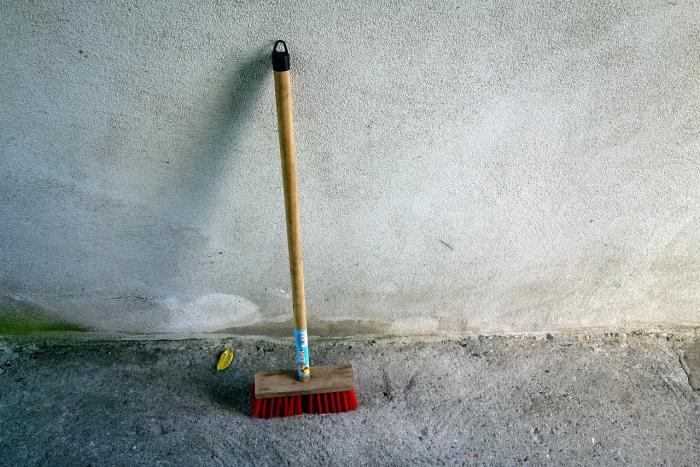What were we obsessed with, invested in and plagued by in 2018? Hazlitt’s writers reflect on the issues, big and small.
I spent four years working in retail for a fast-fashion chain that, at the time, employed a program colloquially known as “rip shifts,” processing items no longer in sellable condition. Sometimes unsellable meant returned purchases sodden with sweat and cigarette smoke. Sometimes it meant a decision passed on from management about a shipment of 89 mustard yellow polo shirts seven months out of season.
Once or twice a week, an employee would spend six hours in the stock room with a pair of high-quality garden shears, shredding nylon puffer jackets and cheap sandals into unusable bits of material that couldn’t be fished out of a dumpster somewhere and, god forbid, given a second life. Depending on a lot of things—your mood that day, your relationship to this employer, your inclination towards human interaction—it was the best shift to take, so long as you didn’t think too hard about what was actually going on.
After working a rip shift, I’d have muscle-memory dreams. Of the particular, putty-like give of pulling spandex apart. Of finding the right pocket to split the side seam of a pair of jeans in one smooth cut. Of nests of useless fibres growing taller, forever.
Now, ten years later, once or twice a week, on my way home from work, I’ll stop at the thrift shop down the block from where I live. I pick a section—denim, knits, toddlers’ clothing—and run two fingers along the hangers’ shoulders while going up and down the aisles.
I let texture direct my attention. The plastic pull of acrylic? Pass. Polyester? Any smells or stains will never leave; keep walking. The brush of cotton or wool is good. The tractionless slip of silk, better. Cupro is soft and heavy and indicative of contemporary technology: recycled strands of cotton blended with copper oxide and favoured by manufacturers and designers who value environmental economy, or at least the semblance of such. Since this is a second-hand purchase, I tell myself, I don’t have to worry about the distinction.
If the colour suits and the size is right, I take it off the rack to think about whether or not to take it home. These days, the ritual doesn’t take long. Maybe ten minutes or so. Not too long ago, it used to take hours.
I started thrifting in earnest last year for a few reasons. My second pregnancy permanently swelled my feet up by nearly a whole size, and no pair of shoes I owned still fit. I was on a parental leave salary, and on parental leave time. I told myself it was an ethical choice. Commercial garment production is notorious for its use and pollution of water, inefficient textile use and exploitative labour practices. Perhaps this could be one easy way to feel better about the consumption choices I make, I thought.
This choice quickly ceased to be remotely about ethics or being economical.
On my first trip to that neighbourhood thrift store, thirty seconds after walking past the shelves of mismatched tea cups and silverware and mounted Scarface posters, I spotted a white garment tag still hanging from the hip of a pair of pants, Missoni’s trademark boldface "M." A $700 pair of brand new unworn wool slacks just sitting on the rack, priced at $5.99. “What idiot would throw something like this away?” I thought, at once re-living that one Simpsons episode and finally, truly, turning into my father. I spent the next hour flipping through every hanger on that rack.
I loved, it turned out, wandering among the purged possessions of others. I also loved bringing them home.
My family moved into our most recent, and hopefully permanent, home last Christmas. It was my sixth move in ten years. Nine, if you count a few three-month interstitials spent at my nonna-in-law’s home while we looked for places in a city with one of the most polarized affordability and vacancy rates in Canada.
Our first stay at my nonna-in-law’s home in between apartments was in the year after her husband died. We spent those months helping her bag up his suits, ties and shoes and ensuring they were on the porch for various charity programs to pick up, programs that likely carted them to the same types of thrift stores I’ve spent the last year ambling about in.
That Christmas, we opened and giggled over every bottle of homemade grappa that nonno would distill and store in the basement, left forgotten for years. Most of it was undrinkable—bottles stuffed with deconstructed raspberries and raisins left to bloat into fuzzy, grey balloons—but she insisted everyone take some home. It was the beginning of an ongoing purge that has little to do with KonMari method ideas about minimalist purity. It feels more like a wind-down, one that instills a kind of gratitude and pre-emptive grief whenever I experience it.
At one point, she pulled some clothes out of her closet, three plaid skirts she’d cut and sewn for herself shortly after moving to Canada in the 1960s, and gave one each to her two granddaughters and me. She worked most of her life as a tailor, and these skirts are expertly made. Every hem is perfectly even, every line of the fabric’s pattern book-matched at the seams. I’ve seen such garments while thrifting—handmade clothes, clearly meant for a particular person—and gravitate towards them now. Never to buy them; just to look.
After we’d settled this most recent move, my father started leaving old belongings around our home without telling us. Baby clothes. A bicycle helmet. I know what he thinks he is doing. I want to believe it’s too early for it. I don’t yet have it in me to tell him to stop.






